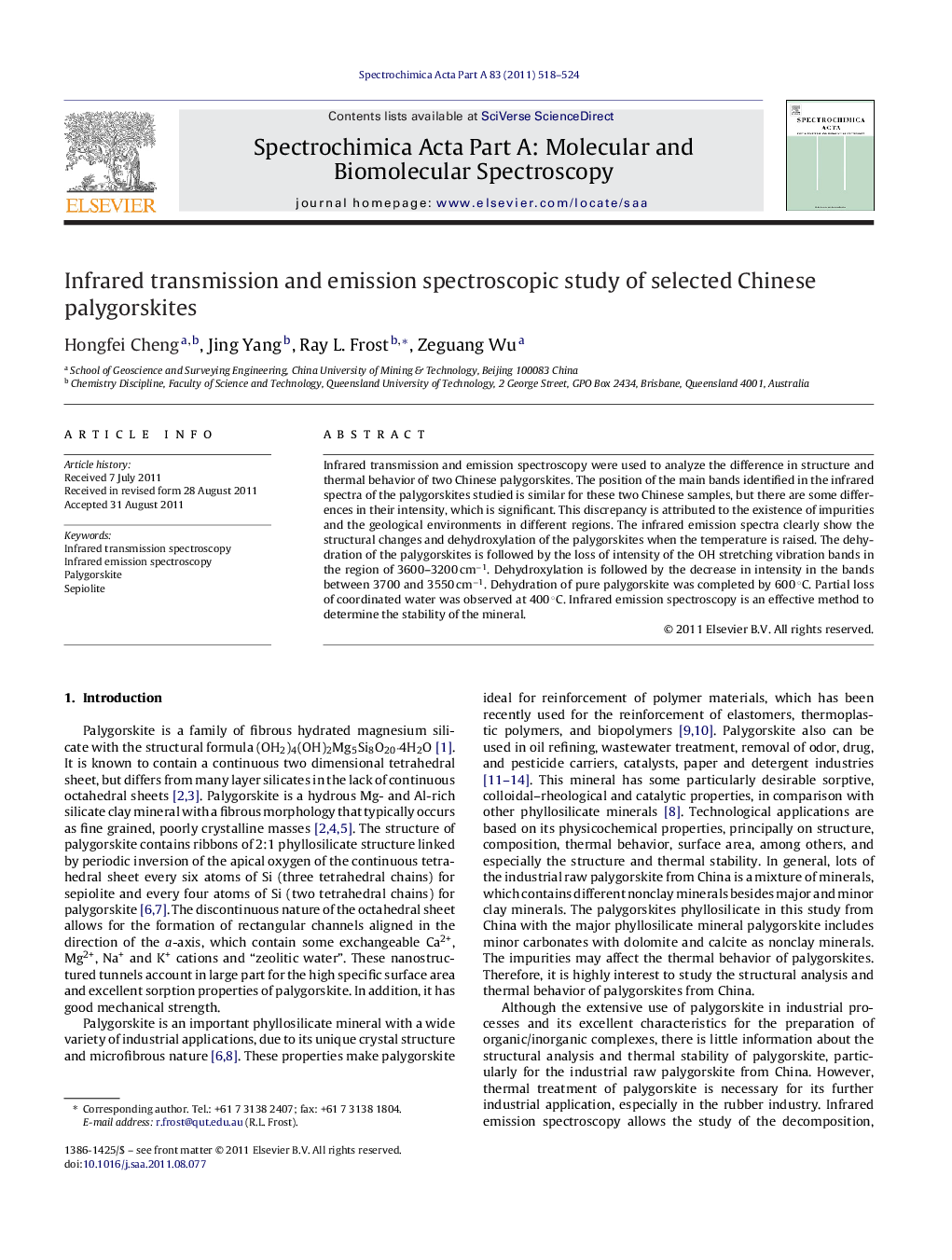| Article ID | Journal | Published Year | Pages | File Type |
|---|---|---|---|---|
| 1235215 | Spectrochimica Acta Part A: Molecular and Biomolecular Spectroscopy | 2011 | 7 Pages |
Infrared transmission and emission spectroscopy were used to analyze the difference in structure and thermal behavior of two Chinese palygorskites. The position of the main bands identified in the infrared spectra of the palygorskites studied is similar for these two Chinese samples, but there are some differences in their intensity, which is significant. This discrepancy is attributed to the existence of impurities and the geological environments in different regions. The infrared emission spectra clearly show the structural changes and dehydroxylation of the palygorskites when the temperature is raised. The dehydration of the palygorskites is followed by the loss of intensity of the OH stretching vibration bands in the region of 3600–3200 cm−1. Dehydroxylation is followed by the decrease in intensity in the bands between 3700 and 3550 cm−1. Dehydration of pure palygorskite was completed by 600 °C. Partial loss of coordinated water was observed at 400 °C. Infrared emission spectroscopy is an effective method to determine the stability of the mineral.
Graphical abstractInfrared emission spectroscopy of selected Chinese sepiolites.Figure optionsDownload full-size imageDownload as PowerPoint slideHighlights► Infrared spectroscopy and infrared emission spectroscopy were used to analysis two Chinese palygorskites. ► The position of the main bands identified in the infrared spectra is similar. ► The infrared emission spectra clearly show the structural changes and dehydroxylation of the palygorskites.
